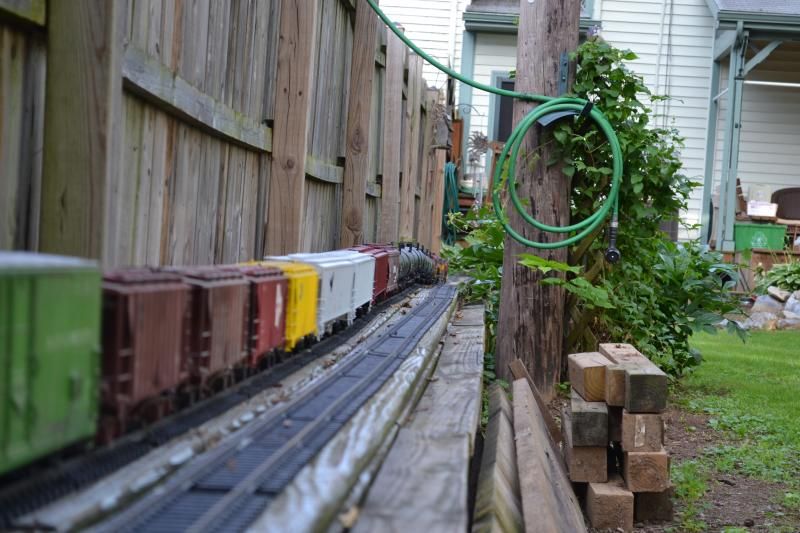I am in the beginnings of putting my garden railroad outside. I have laid out the road bed and the elevation is going to start soon. I plan to raise it all up about 2 feet. Eventually I will want to build up the ground around it. The train runs near the fence so I am thinking cinder blocks on the back facing the fence, and then nicer blocks on the side facing the front.
How far should I keep the cinder blocks from the fence?
I have included some photos here of how the setup is sort of going to look. In one photo you see the roadbed with the cinder block on top near the fence. The other is near the house.
Are there better suggestions for retaining wall on the back side then cinder blocks? They seem pretty cheap.




